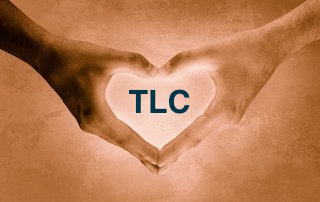The Magic of Motion
The human body is designed to move. Normal
spinal motion allows the spine to move in turning, side motion and
forward/backward. The movement also allows nerve signals from the brain to
successfully travel through the spinal cord to all parts of the body.
Lack of normal motion can cause the brain to
lose communication with the body, and the (remove) decrease the brain’s ability
to control and coordinate it. A decrease in motion can occur from emotional
stress, dietary stress, toxic overload, and physical stress.
Stress causes tension to build up in the
muscles and joints of the body. This tension causes alterations in the normal
structural alignment of the spine. The tension build-up can actually cause
increased irritation and heightened sensitivity of the nervous system,
resulting in pain.
Physical loss of motion can occur from
traumas, auto accidents, falls, birth trauma, sports injuries, repetitive
motion injuries and poor posture. According to the CDC (spell out) the average
child, before they enter their teens, has had over 1000 physical traumas, while
the average American has seven auto accidents in their lifetime. Auto accidents
occur at a rate of 1.2 per second in the U.S. That is more than 103,600
accidents per day.
This loss of motion from trauma results in
stress on the body, joints and nervous system. According to the Spine Institute
of San Diego the damage from automobile collisions may not show up for days,
weeks, months or years. Such symptoms as headaches, decreased mobility,
stiffness, and back pain can occur following trauma, while osteoarthritis may
not show up for years.
The force transferred to the body from an
average rear-end collision, in a normal, mid-sized car, may be as high as five
times the force of the actual collision. In a 10 mile-per-hour accident, the
transferred force may accelerate the body up to nearly 50 mph. Women are
usually hurt more in accidents, because most women have less muscle strength
and body mass than men.
Chiropractic is a safe, effective, non-drug
approach to reducing the effects of stress on a body. Chiropractors spend years
learning to restore normal motion to the spine and joints of the body. Improved
motion results in improved brain and nervous system communication, and improved
body health and function. Chiropractic as a non-invasive health care option has
been validated in numerous studies.
In a comparative study presented at the
International Conference on Spinal Manipulation in Washington, D.C.,
chiropractic care successfully restored spinal motion to patients with low back
pain and walking dysfunction, while those patients receiving conventional care,
including physiotherapy had no change in their walking pattern.
A study in the Journal of Orthopedic Medicine
found that 94% of patients with neck pain, restricted movement and neurological
symptoms responded positively to chiropractic treatment. In a 2 year study
published in the Journal of Manipulative and Physiological Therapeutics,
patients who had received chiropractic care for neck and back pain experienced
increased mobility and less pain, as well as significantly lower health care
costs compared to patients receiving other treatment options.
Many medical physicians today recognize the role
that chiropractic can have in integrative health care. As reported in the
Archives of Internal Medicine, 50% of the Rheumatologists had referred their
patients to alternative health care practitioners, mostly chiropractors.
When chiropractic restores motion to the
joints of the body it can be magical. Ability to turn the head, bend over
easily, walk and move without pain is often instantaneous after chiropractic
treatment. Movement, walking and exercise can become easy again. Even a
ten-minute walk becomes doable, which is important. A California State
University found that a 10-minute walk is enough to increase energy, alter
mood, and affect a positive outlook for up to 2 hours.
To see if chiropractic can increase your mobility call TLC Holistic Wellness at (734) 664 - 0339 to schedule a no charge consultation and free spinal motion evaluation.
